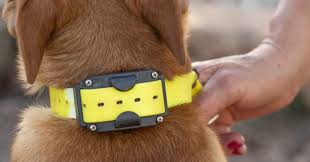Training your dog can be an excellent way to strengthen your bond, but it can be an overwhelming process. Dog training collars can be a helpful tool in refining your furry friend’s obedience skills. With many different types of dog collars on the market, it can be difficult to know which collar is best for your pup’s unique needs. In this guide, we will explore the various types of dog training collars available, how they work, and which may be the most effective for your dog.
Flat Dog Collars
Flat collars are the most popular type of dog collar on the market. Though not designed specifically for training, they are an essential item for basic obedience. Flat collars are perfect for walking, identification, and occasional training. However, if your dog is easily distracted, a flat collar may not be the most effective tool to use.
Martingale Collars
Martingale collars work by tightening up when your dog pulls on the leash, simulating the feeling of being on a leash. However, this type of collar may not be ideal for all dogs as it may agitate them during the training process. They are designed to help dogs that tend to back out of their collars and dogs that love to pull.
Head Halters
Head collars are designed to work much like a horse halter, as it gives you full control of the dog’s head and neck. Head halters are an excellent tool for heavier and potentially more stubborn dogs. They are best used during walks, as dogs may not move around as much when carrying a head halter on their head.
E-Collars
dog training collar ( or electronic collars) are also referred to as shock collars. With this type of collar, an electronic shock can be used to correct problematic behavior. E-collars may be controversial as some consider them inhumane, but when used in moderation and by a skilled dog owner, they can be a harmless and effective tool to achieve the obedience you desire.
Chain Slip Collars
Chain slip collars work by tightening slightly when your dog pulls, eventually discouraging them from pulling. Again, the effectiveness of this training tool depends on the breed and personality of your dog. Chain slip collars are best for owners who have experience with more stubborn, aggressive dog breeds.
Conclusion:
Mastering obedience in dogs requires patience, consistency, and sometimes, the use of appropriate training tools. Dog training collars can be an excellent addition to your dog-training routine. Each of these different types of collars has different benefits, and selecting the right type for your pup can help you achieve the desired level of obedience. Always prioritize positive reinforcement training and consult with a professional dog trainer before introducing a new tool to your dog. By following the proper training practices, you can ensure a happy and obedient furry friend for years to come.



